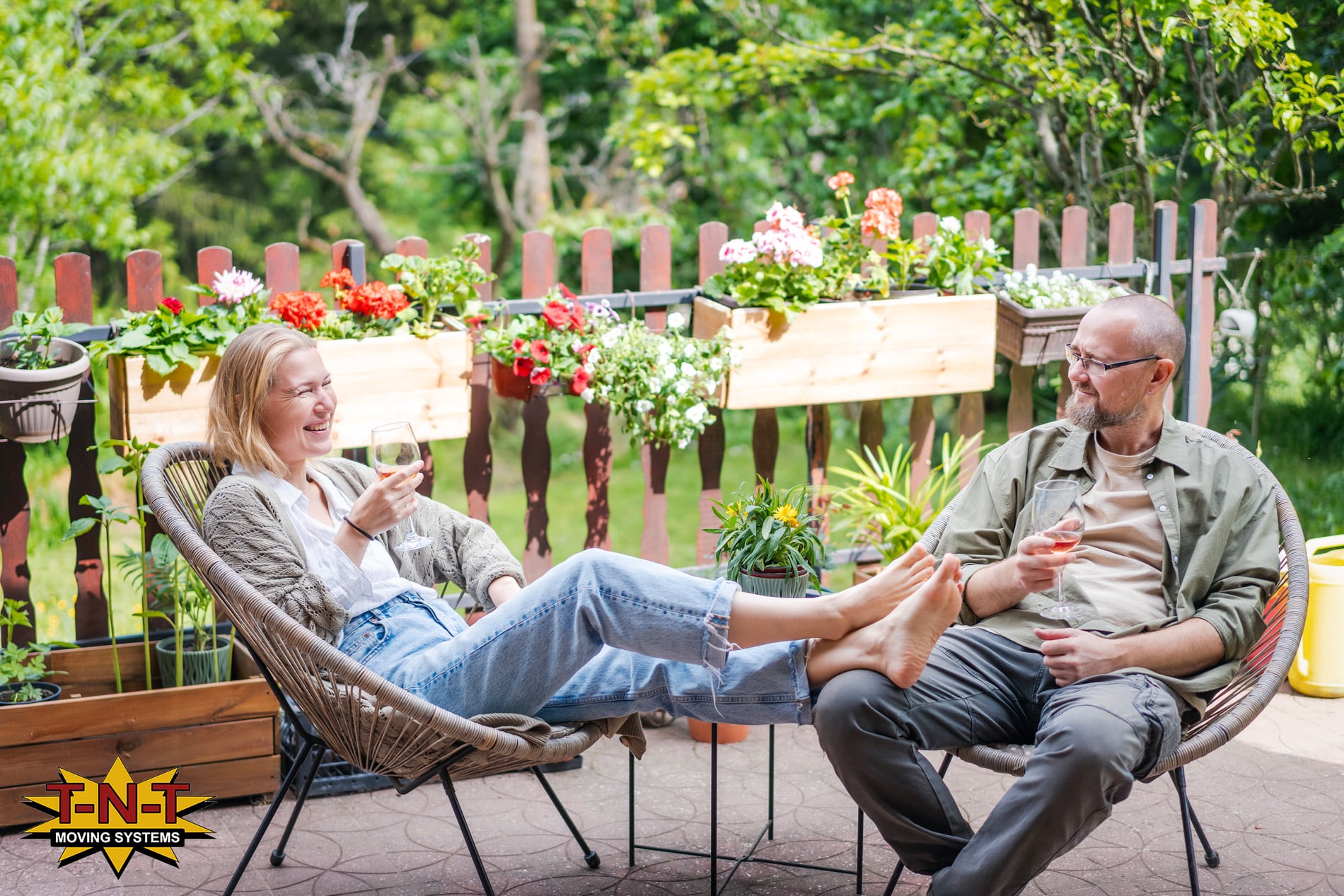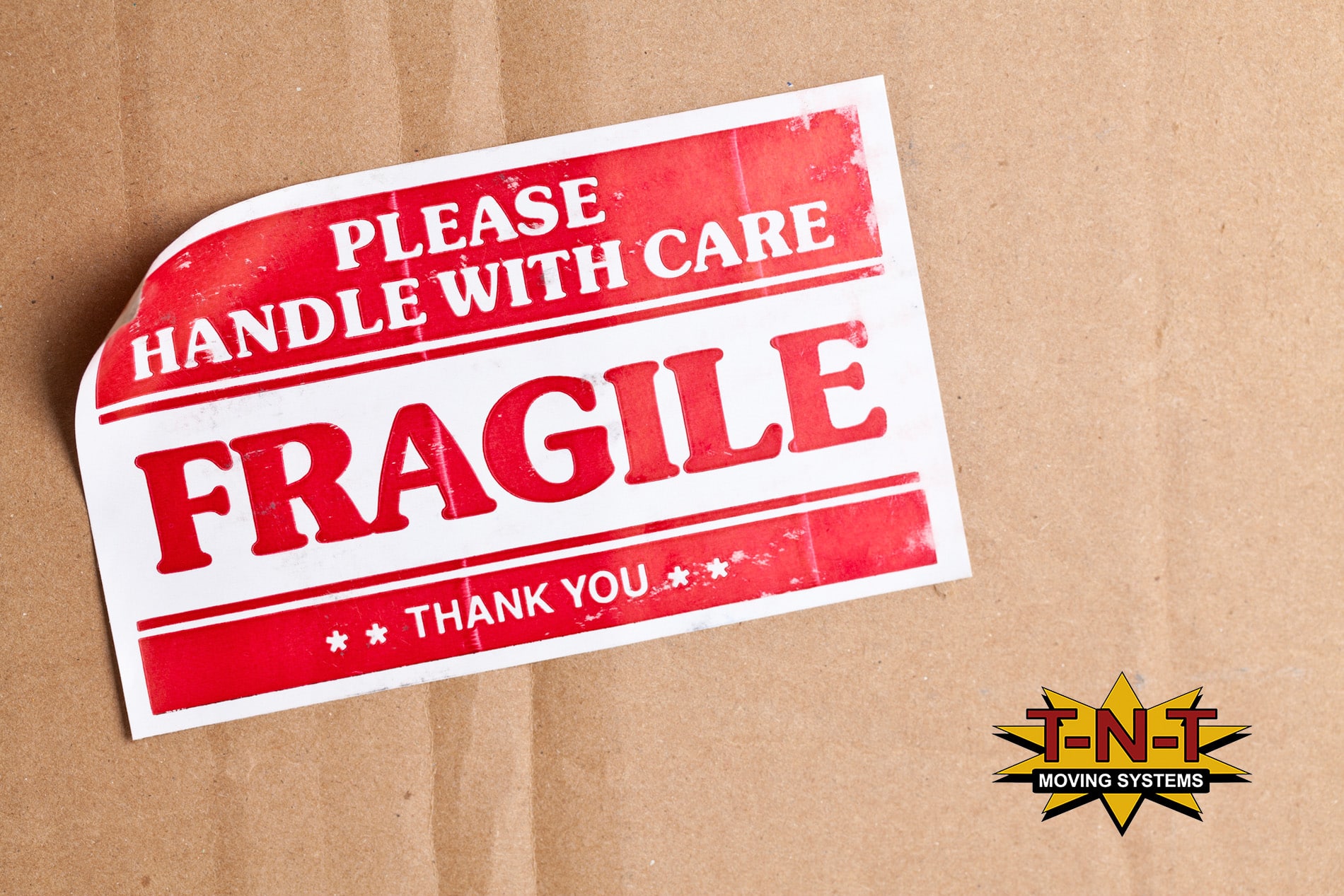Moving the Elderly: 9 Tips for Helping Your Senior Loved One Move
Transitioning to a new home can present unique challenges for seniors and their families. Not only do they need to figure out how to downsize their belongings, but also how to choose the right type of home and move their items. Taking care of such tasks can get overwhelming quickly — from organizing furniture in the right place, packing boxes with carefully selected items, or finding the best donation bin near you.
Knowing how to help your senior loved one move and downsize their possessions seamlessly will minimize their stress throughout the process while ensuring they keep plenty of cherished memories with them! T-N-T Moving Systems shares practical tips to ease the moving and downsizing burdens on both parties involved.

1. Start with a plan
The first step is to sit down with your senior loved one and figure out their goals for the move. Is it for safety, companionship, access to amenities, or something else? This meeting should involve you and your loved one developing realistic goals and expectations.
From there, it’s easier to find the right house or facility that matches their wants and needs. With some thorough planning, you can create a smooth transition for your elderly family member.
2. Make a budget
Making a budget for your move is the best way to be sure you don’t spend too much and end up in an undesirable financial situation. Before starting any of the planning, set aside time to think things through and determine exactly how much you can afford to spend without overextending yourself.
Break down each cost area into individual amounts, and come up with a total figure that is comfortable for your loved one. When sorting out the numbers, remember not only the large moving costs (such as transportation), but also small details like supplies, food, and temporary housing. Making a budget up front will make your move as smooth and hassle-free as possible.
3. Find a new home
Finding a new home for a senior loved one can seem intimidating, but by working together, it can be quite manageable. Start by learning your loved one’s needs and budget, which will help narrow the search and prioritize specific features in a potential new home.
Whether looking for an apartment complex with amenities or a house that fits a particular style or neighborhood, many options are available to fit individual preferences and needs. Consider all the details with your senior’s medical team, financial advisors, and legal counsel before making any decisions about the move. Finding the right home requires careful research and due diligence but can result in a happy living environment for years to come.
4. Choose a Moving Company
Hiring a professional moving service to help relocate your senior loved one is critical. The last thing you want is for your elderly family member to be navigating furniture, boxes, and other items with inadequate assistance. This can result in unexpected accidents or injuries that could have been avoided had the right moving company been hired.
T-N-T Moving Systems has decades of experience as a trusted moving company. We have the expertise to move elderly family members and their belongings safely, and we can provide assistance in every step of the process, from packing up items to loading and unloading the truck at the destination.
The most important thing to do when selecting a moving company is to ensure they have a good safety record and positive reviews from past customers. With T-N-T, you can rest assured that your senior loved one will be in the best of hands. Our team is highly trained and experienced, ensuring that all items are moved with care — no matter how fragile or valuable they may be. We’re also dedicated to providing top-notch customer service, so your elderly family member can rest easy knowing their move will be stress-free!
5. Pack up their belongings
Helping a senior loved one pack up their belongings is an excellent way for you to bond and make memories together! Take your time; this is not something that needs to be rushed. As you go along, take the opportunity to listen to their stories or reminisce about old memories.
Also, label the belongings clearly so they can easily identify each item when they arrive at the new location. Doing so will make unpacking much easier for everyone involved. Being organized and prepared is key for things to run smoothly, but it will also give your loved one peace of mind knowing that all their beloved items are safe and secure throughout their move process.
6. Arrange for transportation
For some family members, arranging transportation for their senior loved ones is the most stressful part of the moving process. You’ll want to ensure your loved one gets to their new home safely, comfortably, and on time. Here are a few options to keep in mind:
- Hiring professional movers
- Renting or borrowing a car or van
- Enlisting the help of family members and friends
You have the power to make this transition as stress-free as possible. Research your options carefully, and factor in your budget when selecting the most suitable option. With the right planning and preparation, you’ll be sure that your senior loved one arrives at their new home safely and without a hitch.
7. Unpack and settle in
When you arrive at your senior loved one’s new home, it’s important to help ease the transition by helping them unpack and settle in. Taking a few extra moments of your time to spend help them familiarize themselves with their new space will help create a comfortable and safe environment as soon as possible. From hanging curtains to putting dishes away, the little ways you personalize the new residence will create a positive living experience. Anything you can do to reduce stress while they adjust to this new chapter makes a significant difference.
8. Help them adjust
Moving to a new living environment can be difficult for any senior, but you can help ease their transition. Start by reminding your loved one that their new house or apartment will eventually feel like home. Make sure they stay connected with friends, family, and favorite activities as these social ties can help reduce feelings of loneliness.
You may also want to assign someone to keep in touch regularly, even if just for a friendly chat. If possible, set aside time to join in their activities or even create new ones together. Everyone’s adjustment process is different, so it’s important to listen and respond to your loved one’s specific needs and preferences. And make sure that you’re communicating your love and appreciation throughout the journey — a little gesture of love will go a long way!
9. Connect them with resources
Many resources are available to seniors relocating to a new home. Do your research, and connect your loved one with the right resources so they can get the necessary help and support during this transition period. Some resources that may be helpful include:
Moving services: These professionals can help seniors with every aspect of moving, from decluttering to packing to setting up their new home.
Home health agencies: These agencies can provide in-home care and support for seniors who need assistance with activities of daily living such as bathing, dressing, and eating.
Transportation services: There are many transportation services available for seniors who no longer drive or have access to a car.
Helping Your Loved One Downsize Their Belongings
As we age, our physical and mental capacities may diminish. For many seniors, this means that their homes become too big to maintain or manage effectively. Downsizing can help alleviate the burden of living in a large home and reduce costs associated with home ownership. Here are a couple of tips for assisting your senior loved one through the downsizing process.
Have a conversation.
Start by talking to your loved one about his or her preferences. Are there certain items they want to keep? Are they willing to part with some of their belongings? It’s important to show respect and understanding during this conversation, as it may be difficult for them to accept change. Knowing their wishes ahead of time will make the process smoother and less stressful for everyone involved.
Make a list.
Next, do an inventory of what needs to be done. Make a list of all items that need to be sorted through — furniture, clothing, décor pieces, knickknacks, etc. And determine which items are necessary or useful and which can be discarded or donated. If space is an issue, consider investing in storage solutions like vacuum bags or plastic containers to help maximize available space while keeping items safe from damage or dust accumulation.
Execute your plan.
Once you have a plan in place, it’s time to execute it! Set up areas for different types of items (e.g., clothing, furniture, decor, etc.) within the house so that everything is easy to find when needed. Also, label boxes clearly so that you know where everything should go at the end of the process; this will save time later on when it’s time to move out any remaining items from the house. And remember to enlist friends or family members who can help you sort through items more quickly (and maybe even learn a few stories along the way!).
Conclusion
The downsizing process doesn’t have to be overwhelming if you take the right steps ahead of time. By having open conversations about preferences and creating a detailed plan for downsizing your senior loved one’s belongings, you can ensure that this transition is smooth and stress-free for them (and yourself!) Consider the tips above for helping your loved one sift through belongings and move to their new home. And remember to connect with T-N-T Moving Systems for a stress-free experience!




